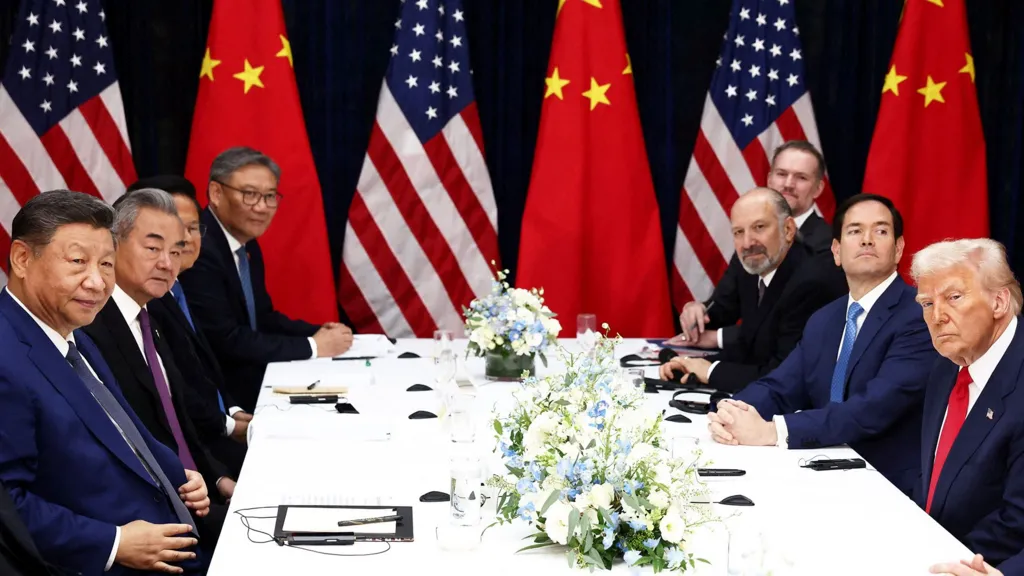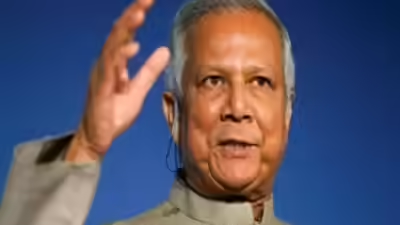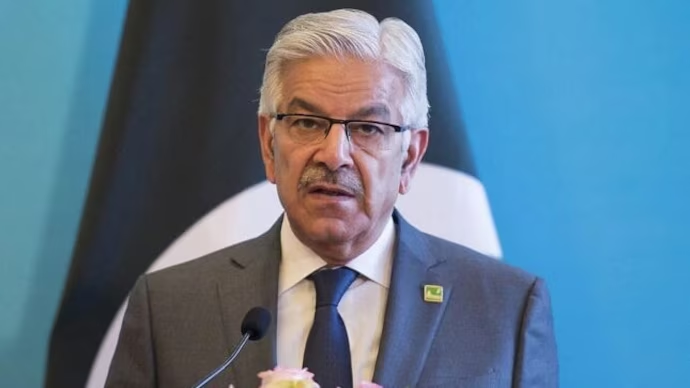
On 30 October 2025, U.S. President Donald Trump and Chinese President Xi Jinping met on the sidelines of the Asia‑Pacific Economic Cooperation Summit 2025 in South Korea to secure a strategic truce in the escalating trade war between their countries. Mr Trump announced immediate reductions in U.S. tariffs on Chinese imports, while China committed to resume purchasing U.S. agricultural goods and to maintain steady exports of critical rare-earth minerals. However, analysts emphasise that this accord is tactical rather than transformative, with the deeper structural issues between the two economic powers still unresolved.
What Was Agreed and Why It Matters
In the meeting, President Trump declared that U.S. tariffs on Chinese goods would be reduced from around 57 % to 47 %, and that specific “fentanyl-related” tariffs on Chinese imports would be cut further from 20 % to 10 %. China, in turn, pledged to resume large-scale purchases of U.S. soybeans and to maintain access to rare-earth minerals, a critical supply for civilian tech and defence systems alike. The deal also removed the immediate threat of the U.S. implementing a 100 % tariff on Chinese goods starting 1 November.

READ ALSO: Milei Wins Argentina Midterms, Strengthens Austerity Mandate
These moves carry significant implications. For the U.S., they ease pressure on agribusiness and consumers facing costlier imports; for China, they relieve threat to global supply-chains and signalling of economic leverage. The rare-earths component is particularly strategic—China processes over 90 % of the world’s rare-earths supply chain, giving Beijing substantial leverage. By postponing export controls for at least a year, China concedes breathing-space to global markets and the U.S.
Why the Debate Continues Deeper Issues Still Exist
Despite the upbeat framing, both sides acknowledge that this is less a comprehensive settlement and more a pause in hostilities. While tariffs are being lowered and export restrictions eased, core issues remain , for example, U.S. concerns about China’s industrial subsidies, manufacturing over-capacity, technology transfer and state-driven growth model; China’s concerns about what it views as unfair U.S. geopolitical and trade pressure.

The deal leaves intact large portions of the trade war framework: high tariffs remain, export controls on advanced semiconductors and tech persist, and China maintains long-term leverage in critical mineral supply chains. Analysts view the agreement as a “tactical truce” rather than a strategic realignment , valuable relief for global markets and industries, but not yet a pathway to full normalisation.







